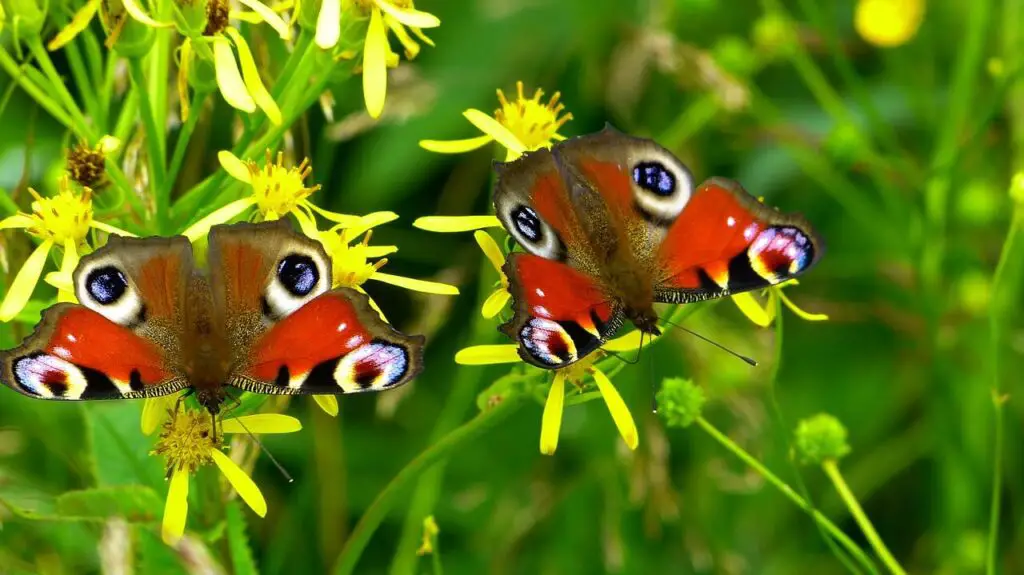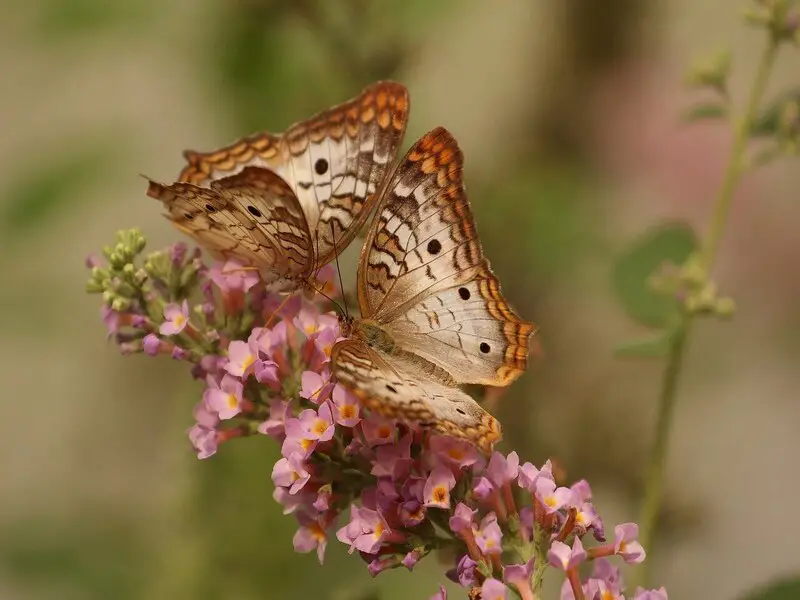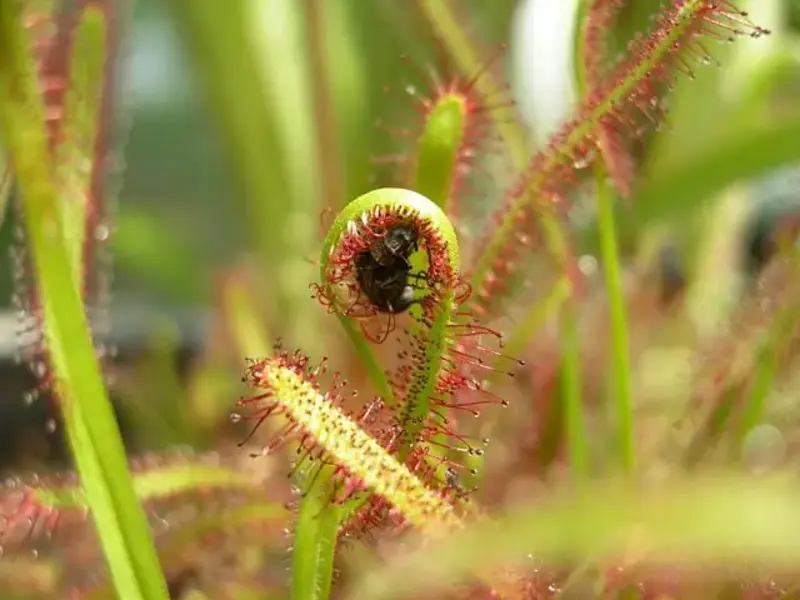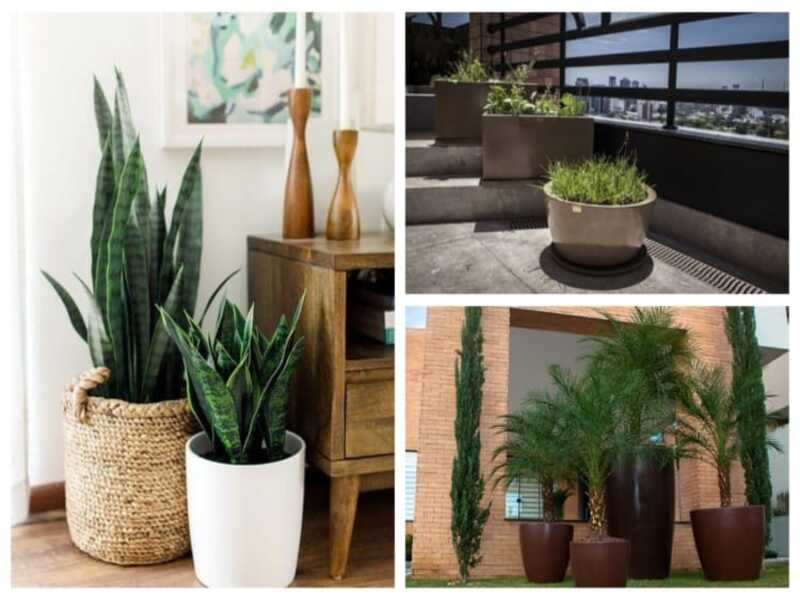If you are a nature lover, transforming your garden into a butterfly sanctuary is an exciting project to undertake. Attracting these beautiful creatures to your garden can be an enjoyable and rewarding experience. In this article, we will discuss some tips and tricks that you can use to attract butterflies to your garden and create a sanctuary for them.
Why Attract Butterflies?
Butterflies are important pollinators that play a vital role in maintaining the health and diversity of ecosystems. They help to transfer pollen from one plant to another, which leads to the fertilization of plants and the production of seeds. Without pollinators like butterflies, many plants would not be able to reproduce, which could have significant consequences for the environment.
In addition to their important role as pollinators, butterflies are also indicators of a healthy ecosystem. They are sensitive to changes in their environment and can be used to monitor the health of an ecosystem. By attracting butterflies to your garden, you are not only adding beauty and color to your outdoor space, but you are also helping to create a healthy and thriving ecosystem.
Furthermore, watching butterflies in your garden can be a peaceful and calming experience. Many people find that observing butterflies can help to reduce stress and anxiety, making it a great activity for relaxation and mindfulness.

Choosing the Right Plants
Choosing the right plants is crucial when it comes to creating a butterfly-friendly garden. Butterflies are attracted to plants that produce nectar, which is a source of food for them. When selecting plants for your garden, it’s important to choose a variety of flowering plants that will provide a continuous source of nectar throughout the growing season.
One way to attract butterflies is to choose plants that are native to your region. Native plants are adapted to the local climate and soil conditions, and they provide the right type of nectar that local butterflies need. Native plants also support other local wildlife and help to create a healthy and diverse ecosystem.
When selecting plants for your butterfly garden, choose plants with different flower shapes and colors. This will help to attract a variety of butterfly species, as different species are attracted to different flower shapes and colors. Some examples of plants that are known to attract butterflies include butterfly weed, bee balm, coneflower, milkweed, and phlox.
It’s also important to consider the seasonality of your plants. Choose plants that will bloom at different times throughout the growing season, so there is a continuous source of nectar for the butterflies. This will help to ensure that your garden is attractive to butterflies throughout the year.
Providing Food for Caterpillars
If you want to attract butterflies to your garden, it’s not enough to just provide nectar-producing plants; you also need to provide plants that caterpillars can feed on. Caterpillars are the larval stage of butterflies, and they have specific plant preferences depending on the butterfly species. Providing food for caterpillars is essential if you want to create a garden that supports the entire butterfly life cycle.
One of the best plants to attract caterpillars is milkweed. Milkweed is the primary food source for monarch butterfly caterpillars and is essential for their survival. Other plants that caterpillars love include parsley, dill, fennel, and rue. These plants provide a source of food for a variety of butterfly species, including swallowtails, blues, and skippers.
When providing food for caterpillars, it’s important to avoid using pesticides or herbicides. These chemicals can be harmful to both caterpillars and adult butterflies. Instead, use natural methods to control pests, such as companion planting or using organic pest control products.
It’s also important to note that caterpillars may munch on the leaves of the plants they feed on. While this may not look aesthetically pleasing, it’s a sign that your garden is providing a valuable food source for caterpillars. By allowing caterpillars to feed on your plants, you are supporting the entire butterfly life cycle and contributing to the health of the ecosystem.
Creating a Habitat
Creating a suitable habitat for butterflies is crucial if you want to attract them to your garden. Butterflies need shelter and protection from the elements and predators, and creating a habitat that provides these things is essential.
One way to create a safe and sheltered space for butterflies is to build or purchase a butterfly house. Butterfly houses are small wooden structures that are designed to provide shelter for butterflies during bad weather or cold temperatures. They also offer protection from predators such as birds or squirrels. You can purchase butterfly houses online or at your local garden center, or you can build your own using plans that are readily available online.
In addition to providing a butterfly house, you can also create a sheltered area in your garden by planting shrubs or trees. These plants can provide a natural habitat for butterflies, offering protection from the wind and rain. Some good options for shrubs include lilac, butterfly bush, and azalea. Trees such as dogwood, oak, and birch can also provide a suitable habitat for butterflies.
When creating a habitat for butterflies, it’s also important to avoid the use of pesticides and herbicides. These chemicals can be harmful to butterflies and can disrupt the delicate ecosystem of your garden. Instead, use natural pest control methods, such as companion planting, to keep pests at bay.
Providing Water
Providing a source of water is essential if you want to attract butterflies to your garden. Butterflies, like all living creatures, need water to survive. However, providing water for butterflies is often overlooked when creating a butterfly garden.
One easy way to provide water for butterflies is to create a shallow birdbath. Butterflies are attracted to shallow water sources, and a birdbath can provide a perfect spot for them to take a drink or even take a dip. Make sure to keep the water level low, as butterflies prefer shallow water sources.
Another option is to place a shallow dish filled with water in your garden. A plant saucer or a shallow dish with rocks in it can work well. The rocks provide a landing spot for butterflies to rest while drinking. Make sure to keep the water level low and change the water frequently to prevent mosquitoes from breeding.
In addition to providing water, you can also create a moist area in your garden by adding a shallow depression filled with sand or soil. This will provide a spot for butterflies to gather moisture and minerals, which are important for their survival.
It’s important to remember that while providing water for butterflies is essential, it’s equally important to avoid the use of pesticides and herbicides in your garden. These chemicals can contaminate the water and harm butterflies and other pollinators.
Avoiding Pesticides
Pesticides are often used to protect plants from harmful insects and pests. However, the use of pesticides can harm not only the pests but also the beneficial insects such as butterflies. Pesticides are toxic to butterflies and can affect their reproductive ability, growth, and behavior. Therefore, if you want to create a butterfly sanctuary in your garden, it’s essential to avoid using pesticides.
One way to control pests without using harmful chemicals is through companion planting. Companion planting involves planting different species of plants together that have mutually beneficial relationships. For example, planting herbs such as basil and oregano with tomatoes can help deter pests while providing food for butterflies.
Another method is to introduce beneficial insects such as ladybugs and lacewings to your garden. These insects prey on pests and help keep their population under control. You can attract these beneficial insects to your garden by planting flowers such as daisies and sunflowers, which provide nectar for them.
In addition to companion planting and introducing beneficial insects, you can also use physical barriers such as row covers to protect your plants from pests. Row covers are lightweight fabrics that can be draped over plants to prevent insects from reaching them.
Creating a Butterfly Garden Design
To create a successful butterfly garden, it’s important to have a well-planned garden design. When designing your garden, consider the height of the plants, the shape of the garden bed, and the color of the plants. A butterfly garden should be designed to provide food, shelter, and protection for the butterflies.
One way to create a butterfly garden design is to group plants together by height. This creates a layered effect, which is attractive to butterflies. Place tall plants at the back of the garden bed and shorter plants at the front. This not only creates a visually appealing design but also provides a sheltered area for butterflies to rest.
The shape of the garden bed is also important when designing a butterfly garden. Butterfly gardens should be designed in a way that allows butterflies to move freely around the garden. Avoid creating narrow pathways or areas that are difficult for butterflies to fly through. Instead, create a more open design that allows butterflies to move freely around the garden.
The color of the plants is another important factor when designing a butterfly garden. Butterflies are attracted to bright colors such as red, orange, and yellow. When choosing plants, look for varieties that have brightly colored flowers. This will help to attract butterflies to your garden.
In addition to the height, shape, and color of the plants, it’s important to consider the type of plants you choose. As mentioned earlier, butterflies are attracted to nectar-producing plants and plants that caterpillars can feed on. When choosing plants, make sure to select a variety of plants that provide food for both adult butterflies and caterpillars.
Monitoring Your Garden
Monitoring your garden is a crucial part of maintaining a successful butterfly sanctuary. Regularly inspecting your plants for any signs of damage or disease can help you catch and address issues before they become more significant problems. Some signs of damage to watch out for include holes in the leaves, chewed stems, and wilting plants.
In addition to inspecting your plants, it’s also important to monitor the number of butterflies that visit your garden. Keeping track of the number and types of butterflies that frequent your garden can provide valuable insight into which plants are most attractive to them. This information can help you make adjustments to your garden design and plant selection to optimize the habitat for butterflies.
You can monitor your garden by taking regular walks through the space and observing the plants and butterflies. Consider keeping a journal or log to record your observations, including the date, time, weather conditions, and any notable sightings or changes in the garden.
Maintaining Your Garden
Maintaining your garden is an ongoing process that requires regular attention and care. To create a thriving butterfly sanctuary, you need to make sure your plants are healthy and well-maintained. This involves several tasks, including watering, fertilizing, and pruning.
Watering your plants regularly is essential to their growth and health. Make sure your plants are receiving enough water, especially during dry spells or hot weather. But be careful not to overwater, as this can lead to root rot and other problems.
Fertilizing your plants is also important. Choose a fertilizer that is appropriate for the type of plants in your garden and apply it according to the instructions. Fertilizing your plants will provide them with the necessary nutrients to grow and produce plenty of nectar and foliage.
Pruning your plants is another crucial task in maintaining your garden. Regular pruning helps to keep your plants healthy and prevents them from becoming too crowded. It also promotes new growth and encourages the production of more flowers.
In addition to these tasks, it is also important to keep an eye out for pests and diseases. Inspect your plants regularly for signs of damage or disease, and take appropriate action if necessary. Using natural pest control methods, such as companion planting or using insecticidal soap, can help to keep your garden healthy and free of pests.
Common Butterfly Species to Attract
Attracting different butterfly species can add to the beauty and diversity of your garden. The Monarch butterfly is one of the most recognizable and popular species. These butterflies are known for their orange and black wings and are attracted to milkweed plants, which are essential for their survival.
The Painted Lady butterfly is another common species that is attracted to nectar-producing plants such as zinnias and sunflowers. They are known for their colorful wings that feature a mix of orange, black, and white.
The Black Swallowtail butterfly is also a popular species that can be attracted to your garden. These butterflies are attracted to parsley and dill plants, which caterpillars feed on. Their wings are black with a mix of blue and yellow spots.
Other butterfly species that can be attracted to your garden include the Eastern Tiger Swallowtail, the Spicebush Swallowtail, and the Great Spangled Fritillary. Each species has its unique preferences when it comes to food and habitat, so research is essential before planting your garden to ensure that you are attracting the right species.
Conclusion
Transforming your garden into a butterfly sanctuary can be a fun and rewarding experience. By following these tips and tricks, you can attract a variety of butterfly species to your garden and create a thriving ecosystem. Remember to choose the right plants, provide food for caterpillars, create a habitat, provide water, avoid pesticides, create a butterfly garden design, monitor your garden, and maintain your garden regularly.




